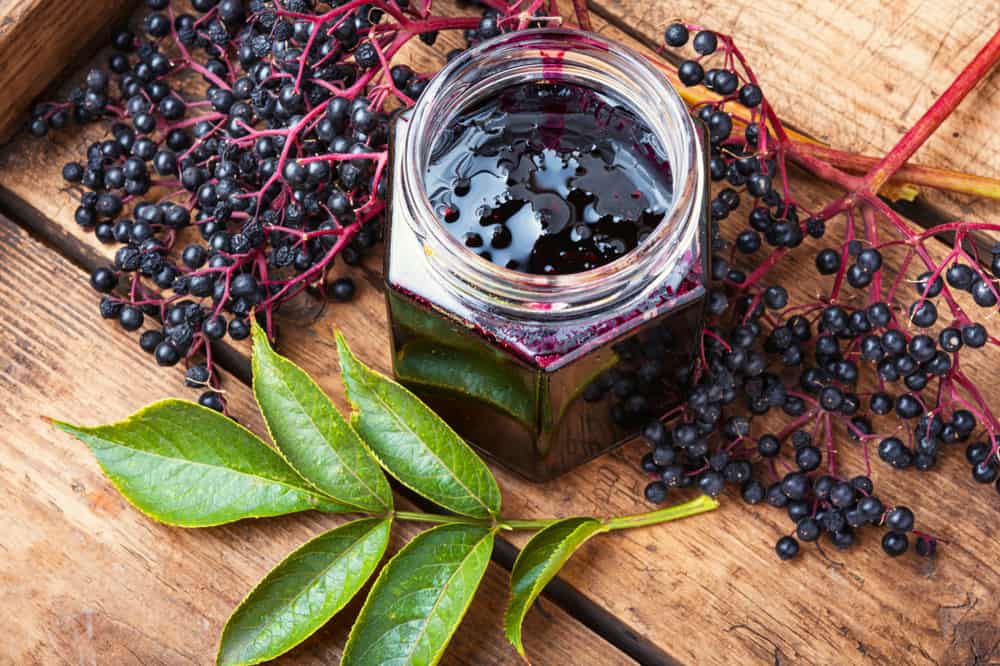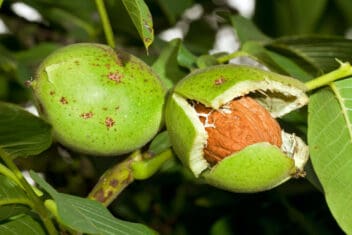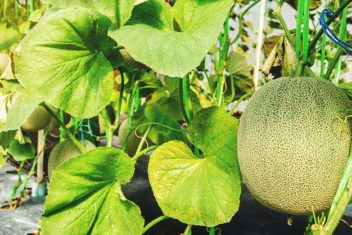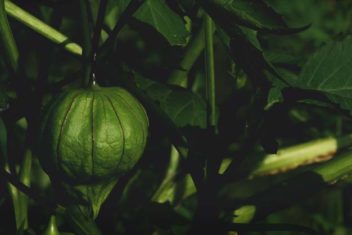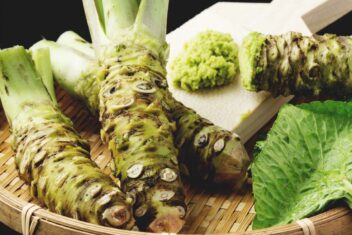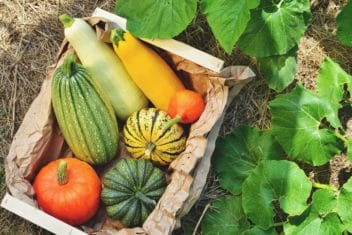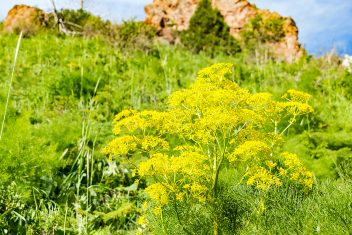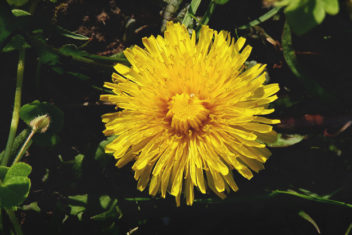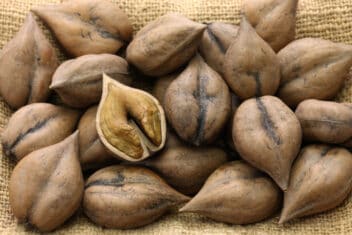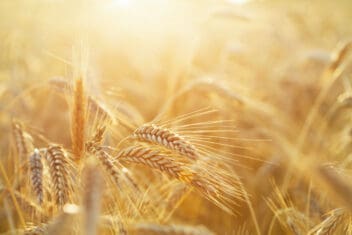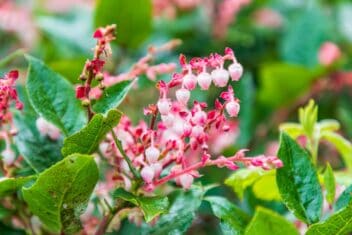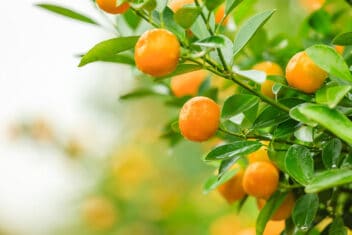Black elderberries are hands-down my favorite plant in the orchard. Not only do they have excellent health benefits and flavor, but growing black elderberries is easy. So easy, in fact, that you might walk by your bush and wonder where on earth all the masses of berries came from since they weren’t there the other day.
Having a plant that lets you use the flowers and the berries is super-handy, too. From elderflower champagne to elderberry wine, lozenges and tonics, this vitamin C-loaded fruit is a staple in many countries that you can enjoy growing almost anywhere.
What is Elderberry?
You may be familiar with elderberries because you often see them growing wild, especially in the western part of North America. But many people don’t know that there are several different forms of elderberry. Sambucus nigra is the main species, with black elderberry (S. nigra spp. canadensis), European elder (S. nigra L.), and American elderberry (S. nigra L. ssp. canadensis) being the most common.
Black elderberries grow wild in North America, Europe, South America, Asia, and the South Pacific. White elderberry (S. gaudichaudiana) is native to Australia but has been cultivated around the world. S. racemosa grows wild in North America, but its red berries are poisonous. Avoid them.
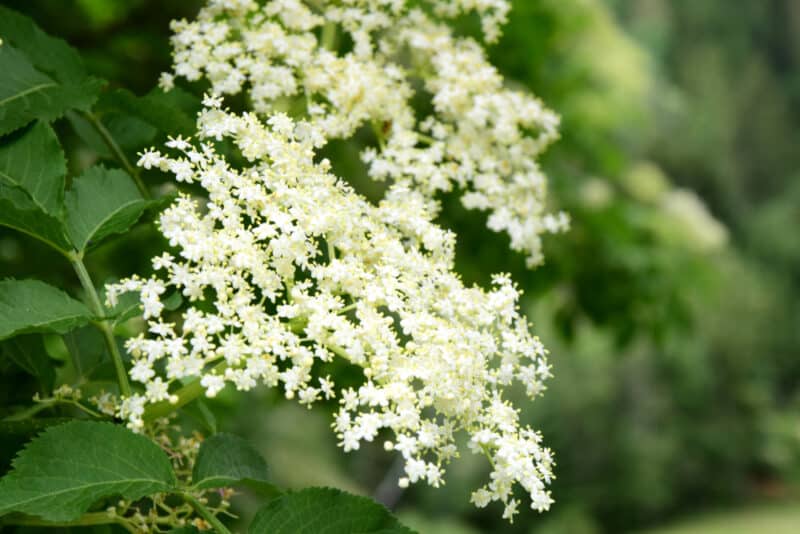
Black elderberries are a forager’s favorite, and though it’s a shrub, it often grows into a plant the height of a tree – up to 20 feet tall.
Historically, elderberries were renowned for their medicinal qualities and the tree was surrounded by myths, legends, and stories. The “father of medicine” Hippocrates even called the plant a “medicine chest.”
Various cultivars of black elderberry are available today, and any variety has some medicinal use or culinary use. This is also the plant you want if you use elderflowers. For a general guide on growing all the different types of elderberries, you might want to visit our growing guide.
Best Elderberry Varieties
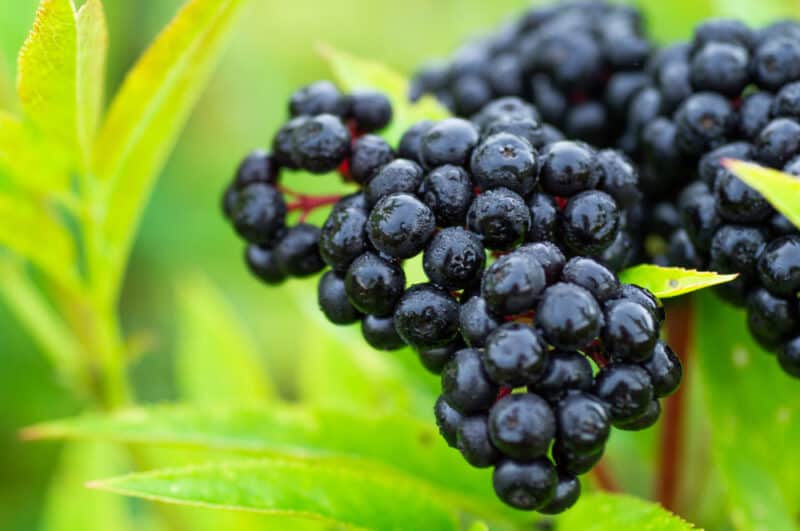
The key to success with growing black elderberries is selecting the right cultivar for your USDA Growing Zone. Generally, these plants can grow in Zones 3-9, depending on the cultivar. Here are the most common:
Adams
This is a very common cultivar and the one I have. It’s a prolific fruiter and the flowers cover the entire plant before turning into berries. This one often grows in the wild where it has naturalized and is reasonably compact at around 10 feet tall, which makes harvesting easier.
York
This is known to be one of the most prolific fruiters out of all the elderberry cultivars. The berries are large and very dark. The leaves will turn red in fall and is more cold tolerant than many other varieties and can survive down to Zone 3.
It will grow to around 12 feet tall.
Black Lace
This European cultivar has a beautiful dark leaf with stunning pink flowers. The berries are used just like any other variety and are usually plentiful.
At just 8 feet tall, black lace is perfect for a smaller garden, though you will find it prefers a rainy environment where it can get plenty of moisture. Consider this variety more of an ornamental than a berry provider since it isn’t very prolific.
Black Beauty
This European cultivar not only has black berries, but dark red foliage, as well. The flowers are lemon-scented and pale pink. This is usually used as an ornamental rather than a productive berry producer, but the berries are still delicious. You’ll need two of them since they need a partner for cross-pollination.
Bob Gordon
If you want lots of large, juicy berries, ‘Bob Gordon’ is your guy. This plant is one of the most productive black elderberries growing. It does best in Zones 4-9.
Johns
If you’re looking for a highly productive American cultivar, this black elderberry is calling your name. It produces huge masses of black fruits on a plant that reaches up to 12 feet high.
Scotia
This cultivar is perfect for northern gardeners. It was bred in Nova Scotia and has particularly sweet berries.
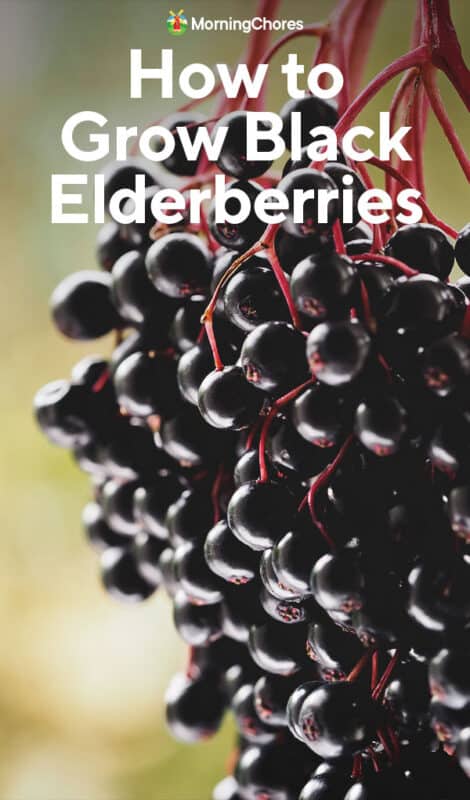
Propagating Elderberry
Propagating black elderberries from cuttings is easy. Very rarely will your cuttings fail on you.
You need softwood cuttings consisting of new growth. It’s best to take the cuttings from the plant in spring as the tree is breaking dormancy. A branch that is just turning from green to brown is perfect.
The cutting should be about six inches long. Remove all the leaves except the top pair.
Water Method
You can root an elderberry cutting in water. Simply place the cutting in a jar of enough water to cover the bottom half. Place the jar on a windowsill in the sun and change the water every third day. Mist the upper portion of the cutting daily and in a few weeks, you will see new roots forming at the bottom.
Elderberries rooted in this way are quite tender at first, so make sure there is a good amount of roots formed before you plant them in soil. Move to a pot indoors and then harden it off before planting outside.
Soil Method
Soak the cutting in water as above for 12 hours before planting in soil.
Take a small pot and fill it with a good quality seed-raising mix. Push the cutting in to cover the bottom third and water gently, or use a misting bottle.
Secure a clear plastic bag over the cutting and container to create a mini greenhouse. Place in a bright area with indirect sunlight. Check the cutting every second day and rewater or mist if the soil looks dry.
Within six weeks you can give the cutting a gentle tug. If there is a bit of resistance, roots have formed and you can plant out in the garden. If no roots have formed, the cutting will simply slide out. Discard it and try again.
Be sure to harden your cutting off before you plant it in the ground outside.
Planting Elderberry
The majority of black elderberries grow well in USDA Growing Zones 3 to 9, though some are only hardy to Zones 4-7. Plant in the spring or fall for best results. Choose a site where the plant can grow tall and wide. Allow for 12 feet in height and 8 feet wide. Crowding your plants is a recipe for fungal disease.
Elderberry love sun and water, so choose a site that gets at least six hours of sun every day. The plant should have access to plenty of natural water or place it where you will be able to water it frequently.
Loamy soil is best with a pH of 5.5 to 6.5. Add lots of well-rotted organic matter prior to planting and add more each year if necessary.
You can grow elderberry in containers, just make sure you provide plenty of water. Container planting is a great way to keep the tree to a manageable size, but you won’t get the number of berries you get from elderberry planted in the ground.
Dig a hole to suit your cutting. Make sure there is plenty of clearance between the cutting and your lawn or other plants.
Place the cutting into the hole and fill around the rootball with soil combined with well-rotted organic matter so the base of the stem is level with the soil line.
Caring for Elderberry
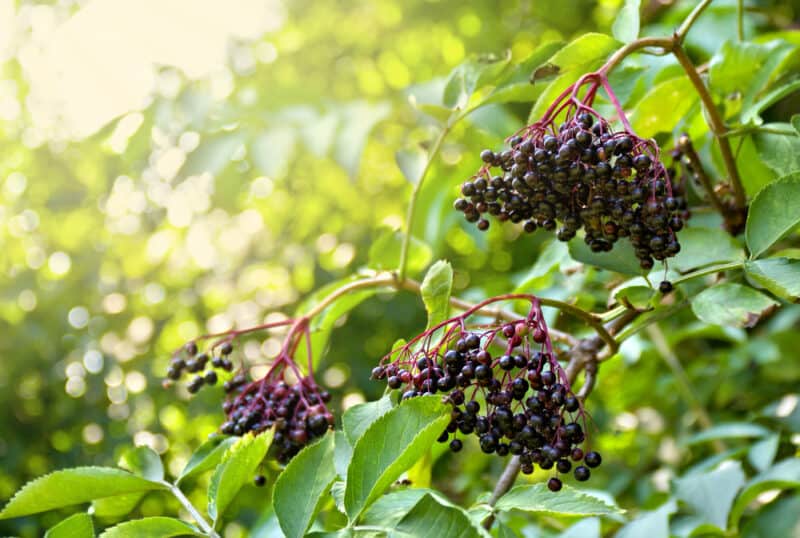
For the first year while growing your new plants, you need to give your black elderberries some extra care. They need constant water, though, of course, they shouldn’t sit with soggy roots. Side dress twice during the first year with well-rotted compost.
Whatever you do, don’t let weeds crowd out your young plants. Elderberries have shallow roots and tough weeds can quickly crowd them out. A young plant can even be smothered and killed by weeds. Don’t neglect your weeding chores. Mulch can also help keep the weeds away and moisture in the ground.
Once the young plants become established, you can pretty much forget them. As long as you aren’t having a prolonged drought, elderberries are famously resilient.
Prune to shape. Varieties like ‘Adams’ and ‘York’ are well known for becoming overgrown with branches reaching out to fill empty spaces. You may need to prune in order to mow underneath the plant or to keep a clear path around it for harvesting the berries. This also helps suppress weeds.
Each year, prune away about a fourth of the canes or branches that are over four years old. Side dress with well-rotted compost in the spring.
Companion Planting for Elderberry
Remember that elderberry plants don’t like having their roots disturbed once they’re growing, so consider planting perennials rather than annuals around the base. Many herbs work well, such as:
- Tarragon
- Oregano
- Marigolds
- Parsley
- Dwarf rosemary
- Marjoram
You can plant elderberries near other berry bushes such as raspberries or blueberries.
You also want to encourage pollinators, so feel free to plant lots of wildflowers by seed nearby.
Common Pests and Diseases of Elderberry
Black elderberries are hardy plants that don’t really suffer from too many growing problems. The biggest issue is usually beating the birds to the ripe berries.
Fungal Canker
When this disease is present, cankers will form on woody branches. Flooding, drought, or incorrect variety for your growing zone make plants susceptible. Really, any kind of stress can make it easy for plants to become sick with this disease, which is caused by the fungi species Cytospora, Diplodia, Nectria, Neonectria, and Sphaeropsis.
Although not always a plant killer, this will weaken the plant and affect berry volume. If a canker girdles the entire branch, it can completely kill off that branch.
Prune affected branches and burn them. Make sure the plant is in a well draining area and water it sufficiently. Keep the plant as stress-free as possible to prevent the fungal infections in the first place. Also, always be sure the cultivar you select is hardy in your zone.
Thread Blight
With thread blight, the leaves will turn brown, curl up at the edges and drop from the tree. Little thread-like strands of fungi may appear on branches. This is normally in the shaded part of the tree or where there is little airflow due to overcrowding foliage.
Try a natural remedy by pruning any infected parts out and increasing airflow. Try to get as much sun as you can on the shaded part of the plant by trimming neighboring plants away.
Make sure you space your elderberry plants well, and remember that they will spread.
Powdery Mildew
Powdery mildew is sometimes an issue, especially in the most humid part of summer. Read our article on powdery mildew to learn how to deal.
Root Rot
This is a disease that affects the roots of plants in wet or overly wet soil. Because the elderberry will be unable to absorb nutrients through the roots, it will look stressed, almost as though it’s in a drought.
The best remedy is prevention. Plant in well-draining soil, don’t over-water, and don’t allow the plant to become stressed in dry weather before following up with excessive amounts of water.
Only water when the soil is starting to dry out completely.
Using Elderberries
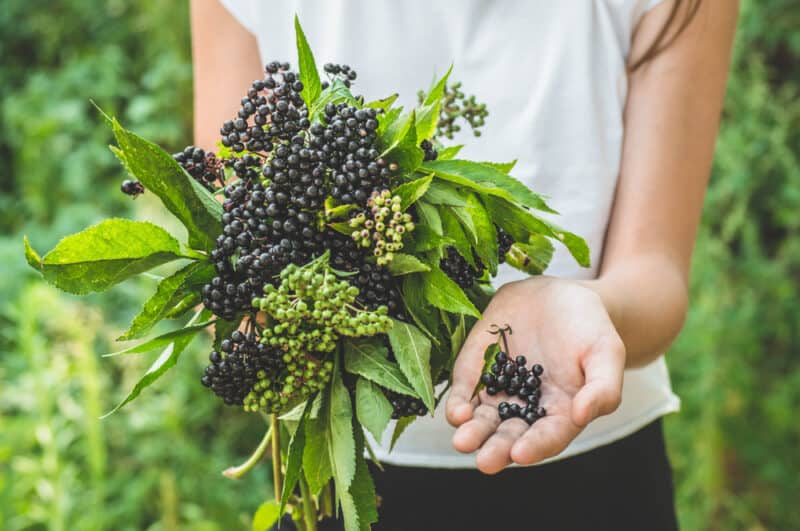
Now for the best part of growing black elderberries! I get excited when I see my elderberry bushes bloom. Their white fluffy flowers are unmistakable and it signals the start of the elderflower “champagne”-making season. If you’ve never tried to make a sparkling elderflower treat, our guide has all the details.
Pick your elderflowers early in the morning when the pollen count is high and the natural yeast is plentiful. Make sure the whole flower is open and fluffy, but not brown on the edges because that is an older one.
Pick the berries when they’re plump, juicy, and their mature color. Don’t wait until they start wrinkling. That’s too long. All the berries in a cluster might not ripen at the same time, so just harvest a cluster when a majority of the berries look ready. Use a pair of pruners to clip the cluster off of the tree.
There are many desserts and beverages using elderflower and elderberries, so don’t feel limited. Use them in place of other berries or look for recipes that are made especially for elderberries. Syrup and jellies are the most common uses, but why not an elderberry pie?
It’s best to cook elderberries, but some people eat a couple off of the tree. Raw berries contain a mild toxin.
Also, remember that the seeds, stems, leaves, and roots of black elderberries are poisonous. Don’t consume them.
